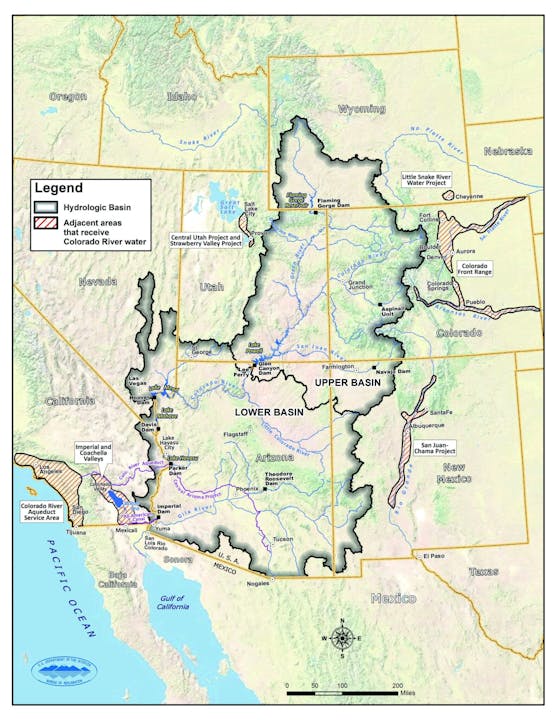Water Time Thoughts on the Compacts | Volume 1, Issue 6 of Water Time Reflections
Author: Steve Harris, Water Engineer, Certified Water Buffalo, and Southwest Coloradoan
This is my last article on the centennial of the Colorado River Compact (CRC) and the younger Upper Colorado River Compact (UCRC) at 75 years (jointly the “Compacts”). In water time, the Compacts are not that old. I have been in the water business in the Colorado River basin for 50 years – half of the CRC’s life – and watched how people viewed the implications of the Compacts over time. The Compacts have gone from background documents to front and center of water discussions.

There has been a lot of hand wringing in the media and some groups about the CRC being based on 15 million acre-feet (maf), even though at the time there was an assumed average flow at Lee’s Ferry of 17 maf. The flow has been much less since 2000. With the current drought, it seems like everyone has an opinion of what should be done to “save” water in the Colorado River Basin, sometimes saying the CRC must be changed because it anticipated an average of 15 maf per year. It is true that the representatives who negotiated the Compacts hoped there was an average of at least 15 maf per year, but they understood that 15 maf may not be available and the Compacts were negotiated in a manner to allocate shortages whatever the actual water supply may be.
People are rightfully concerned that the present drought is stressing the available water supply from the Colorado River. If the drought continues, it is clear that for water use to equal the supply, some water uses will have to curtailed. A few issues to keep in mind if curtailments are necessary:
- In order to end or change the Compacts, a law would have to be passed by the legislatures and signed by the Governor of the signatory States and also passed by the U.S. Congress signed by the President. This is a near impossible barrier to achieve.
- The Compacts are both Federal and State Law and as such carry more weight than just State Law as decided by the U.S. Supreme Court in the Hinderlider Case on the La Plata River. Also, in the Upper Basin the UCRC controls how to allocate water to meet the CRC, not the Department of Interior through the Bureau of Reclamation. Reclamation cannot dictate that the Upper Basin has to conserve any amount of water.
- The CRC was negotiated 100 years ago by the States so that the prior appropriation allocation system was not applied between States. If the CRC did not exist California water users would have the most senior water rights and may have already “called out” many Colorado water users. The CRC works for Colorado.
- The 10-year delivery by the Upper Basin to the Lower Basin through 2021 is approximately 87 maf.
- The water to meet the Treaty with Mexico for 1.5 maf per year is not part of the CRC. How much the Upper Basin may have to provide is not defined and what happens is yet to be determined.
- An average usage for the last few decades in the Upper Basin is approximately 4.5 maf compared to the Lower Basin usage over 8.5 maf. The usage difference shows that the low water level in Lake Mead is because of overuse in the Lower Basin. The low Upper Basin use shows that irrigators have shortages in many years due to physical supply.
- The CRC states “Present perfected rights to the beneficial use of the waters of the Colorado River System are unimpaired by this compact.” This is known as pre-CRC (or Compact) water uses which are unimpaired and Post-CRC (or Compact) uses which may be curtailed. Generally, the pre-CRC water uses are for irrigation. Nearly all of the reservoirs on in the Upper Basin and diversions out of the basin (e.g. east slope Colorado) are post-CRC.
- If curtailment of the post-CRC uses does not provide 75 maf there is no further obligation to curtail pre-CRC water uses.
I can sum up my thoughts as: The Colorado River Compact at 100 years and the Upper Colorado River Compact at 75 years are more important now than they have ever been, and if necessary, provide the methodology for allocating water to meet the CRC delivery requirement to the Lower Basin. I recommend that the States in the Upper Basin follow the clear writing of the Compacts and not get caught up in the many “interpretations” that are being raised.
Harris Water Engineering has been in business for nearly 40 years and is one of 28 local partners that support the Water Information Program which provides balanced water educational programs and content to southwest Colorado. Thank you!





